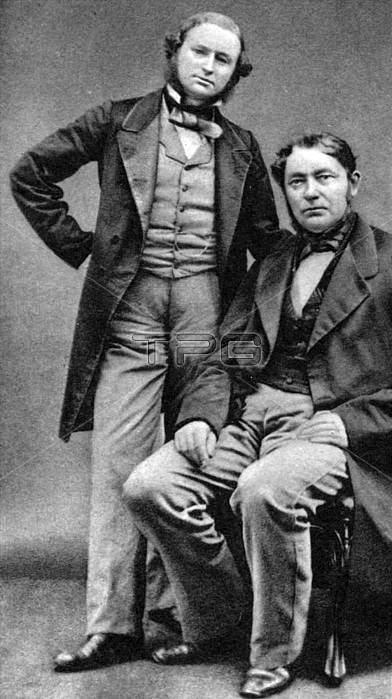
In 1860 Robert Bunsen (1811-1899) and Gustav Kirchhoff (1824-1887) discovered two alkali metals, cesium and rubidium, with the aid of the spectroscope they had invented the year before. Bunsen and Kirchhoff met and became friends in 1851, when Bunsen spent a year at the University of Breslau, where Kirchhoff was teaching. In 1855 Robert Bunsen had created the Bunsen burner for use in flame tests of various metals and salts: its non-luminous flame did not interfere with the colored flame given off by the test material. This line of work led to the spectroscope. It was Kirchhoff who suggested that similarly colored flames could possibly be differentiated by looking at their emission spectra through a prism. When he shone bright light through such flames, the dark lines in the absorption spectrum of the light corresponded in wavelengths, with the wavelengths of the bright, sharp lines characteristic of the emission spectra of the same test materials.
| px | px | dpi | = | cm | x | cm | = | MB |
Details
Creative#:
TOP22159557
Source:
達志影像
Authorization Type:
RM
Release Information:
須由TPG 完整授權
Model Release:
N/A
Property Release:
No
Right to Privacy:
No
Same folder images:

 Loading
Loading